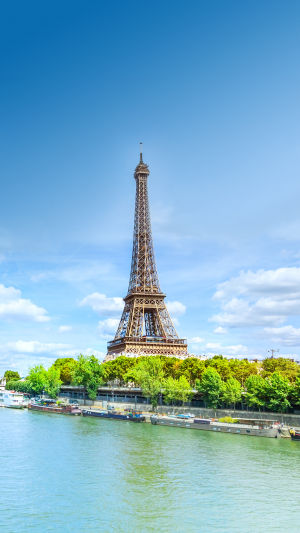The Eiffel Tower stands tall as one of the iconic landmarks of Paris, France, and remains one of the most famous buildings in the world. Its construction history is replete with legends, fueling the curiosity and imagination of people who ponder its captivating story.
The genesis of the Eiffel Tower can be traced back to 1887 when the French government decided to showcase the prowess of French technology and culture at the upcoming 1889 Paris World's Fair. To accomplish this, the government initiated a competition to design a majestic, functional structure that would embody the strength and cultural essence of France.
Amongst numerous design proposals, the submission by engineer Gustave Eiffel emerged triumphant. His visionary concept envisioned a 300-meter-high tower that could serve as a transmitter for radio signals and an observatory. However, this audacious design ignited controversy and skepticism among the public, who believed it to be too bold and precarious.
At the time, architectural styles heavily drew inspiration from Roman and Greek influences, featuring meticulous details in the form of arched windows and doors. Gustave Eiffel's design, in contrast, deviated from this prevailing trend.
Nonetheless, unwavering in his convictions, he remained steadfast and resolved to create a structure that would rank among the world's most exquisite buildings.
Thus, Gustave Eiffel embarked on the arduous journey of construction. He encountered numerous challenges and obstacles along the way, but his unwavering determination allowed him to overcome them and eventually triumph in erecting one of the globe's most renowned edifices.
Many skeptics deemed the project impractical, harboring concerns that this colossal steel masterpiece would collapse during the construction process. Imagining the construction of a towering structure exceeding 300 meters, weighing over 7,000 tons of steel, and held together by more than 2.5 million rivets seemed a daunting, if not impossible, endeavor.
Notably, the tallest building in Paris during that era, Notre Dame, stood at a modest height of less than 100 meters.
However, defying expectations, the seemingly insurmountable task was completed in 1889, leaving skeptics astounded and silenced.
In 1910, a wave of aspiring artists traversed major European cities, embracing modernity and seeking innovation in their pursuit of creative expression. This new generation ardently embraced the wonders of modern life, relishing advancements such as automobiles, telephones, airplanes, movies, and radios.
Their affinity for the new coexisted with a reverence for the old, often pushing the boundaries of innovation while contemplating the destruction of established norms.
Today, the Eiffel Tower stands as an enduring symbol of France, enchanting millions of visitors annually. Its construction history continues to inspire curiosity and imagination, weaving a tale of unwavering courage and unyielding faith.
The tower's allure lies not only in its architectural splendor but also in the narrative of its creation, a testament to the triumph of human ingenuity.
The Eiffel Tower's resolute departure from traditional design, exuding modernity from its foundations to its pinnacle, vexed the group of artists who regarded the tower as an embodiment of mechanization and soullessness.
However, it also served as a wellspring of inspiration for this new generation of artists and designers, driving them to explore uncharted artistic frontiers.
The Eiffel Tower stands as a testament to human determination and creativity. Its construction history, shrouded in legends, continues to captivate and ignite the imaginations of those who contemplate its remarkable story.
As a magnificent structure, it not only embodies architectural brilliance but also encapsulates a narrative of courage and unwavering belief.





